A Shocking Event: How School Made Simple
and Learning Vitamins™ Came to Be
by Edwin C. Myers, Ph.D.

|
| As a young student, Matthew Myers used a tactile-visual-verbal method to solve math problems: finger-counting. While this can be helpful for a time, basic math skills must become ‘automatic,’ so that the student can focus on more complex math skills and concepts. |
I still remember the evening nearly 40 years ago when I found out that our oldest son—who was finishing up a second grade math workbook—couldn’t add:
“Say, Matthew, what’s 7 + 4 ?”
“Uh, 7 + 4 ?” Matt replied. “Let’s see. . . 7, (and his fingers went under the table as he whispered slowly) 8, 9, 10, 11 . . . 11 !”
Each problem I asked went that way. He understood the concept, and could use a concrete procedure (counting fingers) to get the answer (most of the time!) after 7 or 8 laborious seconds.

|
| Today, Matthew is a military engineering officer who uses math a lot in designing and constructing buildings, roads, bridges, and other projects. |
“Two years with workbooks haven’t given Matthew the level of skill he needs,” I thought. “He’ll really get bogged down in multi-digit multiplication and long division, where he’s got to use addition and subtraction routinely on his way to getting the answer. And if he learns to multiply and divide no better than he adds and subtracts, then fractions will be a disaster!”
This episode is what spurred me on to develop Learning Vitamins—quick, potent drills to bridge the gap between just ‘knowing about’ and doing well. In math and other key areas, just a few minutes a day with Learning Vitamins help build skills to that delightful point where your children take off and run with them!
Character, Competence, and School Made Simple
Our School Made Simple products emphasize character and competence. Character springs from the context of one’s creaturehood, moral condition, stewardship under God, and a right relation to the Lord Jesus Christ. Competence includes both knowledge and know-how: knowledge of what is and what might be done, and the skill to make and do.
| Competence without Character... |
|---|
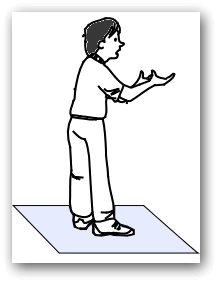
|
| “I'll re-pave your driveway for just $500!” (The job needs 10 sacks of concrete, but I'll use just 6, plus extra sand and water, and make a bundle.) |
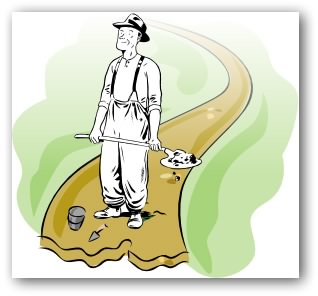
|
| “Six weeks from now, when this driveway cracks, I’ll be long gone!” |
| Character without Competence... |
|---|
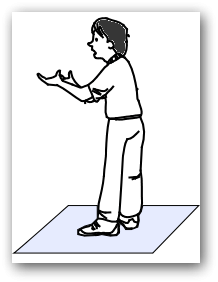
|
| “I'll re-pave your driveway for just $350!” (Six sacks of concrete should be enough to do the job.) |
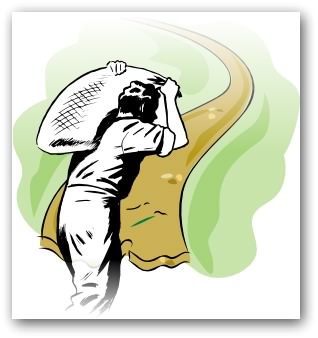
|
| “Whew! It’ll take 10 sacks instead of just six. I won’t make a penny on this job!” |
Character provides motivation to attain competence and to employ it in a life’s work of eternal value, while competence makes possible the expression of character in beautiful, productive ways.
School Made Simple products consist of quick, daily drills which help children bridge the gap between learning what to do and being able to do it well. In other words, our products are “Learning Vitamins®” that help turn knowledge into know-how! Learning Vitamins also provide a moral frame of reference for the subjects covered, by means of the Bible texts that appear on every exercise. As you draw attention to these texts and explore them with your students, they become powerful character-building tools.
Here’s another resource you’ll appreciate:
Dr. Myers has written the article below entitled Simple Steps to Superior Skills which gives some great strategies for making sure that your kids succeed. We're sure you’ll find it informative and encouraging!
Simple Steps to Superior Skills
by Edwin C. Myers, Ph.D.
I still remember the evening over 25 years ago when I found out that our oldest son—who was finishing up a second grade math workbook—couldn’t add:
What’s 7 + 4?
“Say, Matthew, what’s 7 + 4?”
“Uh, 7 + 4?” Matthew replied. “Let’s see . . . 7, (and his fingers went under the table as he whispered slowly) 8, 9, 10, 11 . . . 11!”
Almost every problem I asked him went that way. Matthew understood the concept of addition and he could use a concrete procedure (counting fingers) to get the right answer—most of the time—after 7 or 8 seconds! Matthew’s experience was a classic example of the limitations of knowledge without know-how.
The Armchair Quarterback

|
| The armchair quaterback: He knows what to do, but can he DO it? |
A familiar illustration of knowledge without know-how is the armchair quarterback. A veritable compendium of football knowledge, the armchair quarterback can identify all types of football playing formations, quote the rules of the game in detail, recite statistics on dozens of players and teams, and even call excellent plays from his TV-side seat.
It is quite another thing, however, to walk onto the playing field and actually EXECUTE a play, brilliant as it may be, that was developed while sitting in an armchair, and most armchair quarterbacks would probably fail if they tried. Fortunately, however, most of us don’t have to earn our livelihood by playing football, so that our on-the-field playing skills don’t make a great deal of difference in our lives.
There are a number of skills, though, in which we cannot afford to be mere armchair quarterbacks, but in which our practical performance level makes a big difference in our capability as stewards under God. What are some of these skills? How can we foster their improvement in our children (and in ourselves)? And how can we tell when a skill is learned “well enough”? Let’s look at this last question first.
“Over the Hump” toward Self-Reinforcing Skills
One important criterion by which to judge the adequacy of a basic skill is the question, “Has this skill become self-reinforcing?” We want our students to get to that delightful point where they “take off and run” with the skills they’ve practiced in the classroom. And this happens when students get “over the hump” of their initial awkwardness and slowness, and gain confidence and the realization that their new skills make them more capable and productive. They see the benefits of their enhanced skills, and start using these skills on their own.
Many students never get over the hump in one or more key skills. Unless one gets over the hump, new skills tend to fall into disuse. They just wither away instead of being self-reinforced through voluntary, unprompted use. A good example of this tendency is the “might-have-been piano player.”

|
| For the might-have-been piano player, playing never became “music to the ears.” |
Many of us have perhaps taken lessons on the piano or another musical instrument in the past. We probably recall the unpleasantness of having to practice a skill that simply seemed to rob us of time for doing other activities that we were more comfortable and adept at. If we never got over the hump to where piano playing “paid off” in making an attractive sound for others or ourselves, chances are that we’ve lost much of whatever playing skills we once attained.

|
| Being a ball chaser isn’t much fun when you’re first learning tennis! But once you get “over the hump” in your tennis skills, things are a lot better. |
Playing tennis is another skill that’s beset with a rather obvious hump. On the near side of the hump, you’re a “ball chaser”—not a lot of fun, and you look goofy, too! It’s when you get over the hump of being able to consistently hit the ball where you want to, that tennis can become a permanent skill. (Let the other guy chase the ball some of the time!)
Hemmed In by the Hump!
We have seen that there is often an uncomfortable period—a “hump”— in the learning of an unfamiliar skill. During this period, the learner is often aware of his own clumsiness in regard to the skill he’s learning, and of how even trying to learn the skill may expose his clumsiness to himself and others. He also may become irritated that the very process of learning the new skill leaves him less time for using skills he already knows and enjoys.
Finally, he may not appreciate the fact that the new skill, once learned sufficiently, may well open whole new vistas of interest, usefulness, capability, and enjoyment. Indeed, the new skill may make all of his skills sharper and more effective.

In the mean time, though, there’s still that nasty “hump” to get over before clumsiness is replaced by confidence and vexation by adventure. How do we get over the hump? That’s the question. But before we send our students off to go hopping over humps, we must know what humps each of our students faces. In other words, we need to find out where the humps are before getting over them. So let’s defer the burning question of getting over the humps for a bit, and take a look at the humpy skills landscape first.
The Skills Chain - No Stronger than its Weakest Link

|
| A weak link in the skills chain for addition may not break under the strain of a simple problem, but it’s still there! |
Most tasks in which we would like our students to excel involve the use of a whole suite of skills—something I like to call a “skills chain.” For example, we may casually think that solving the math problem “5 + 2 =” calls for the use of the “addition skill.” With a little reflection, however, we realize that even this rather basic problem requires competence in several skills in order to be solved successfully. These skills include: visual recognition of the numerals written on the page, mental connection with the values to which the numerals correlate, knowledge of the meaning of the “+” and “=” signs, familiarity with other numbers (like the answer, “7”!) which do not appear in the problem at all, and sufficient verbal or manual skill to say or write down the answer.
Typically, as we increase our knowledge and proficiency in a particular discipline, we do not build lots of separate skills chains to accomplish the various desired tasks. Rather, we assemble only one or a few skills chains which we “grab onto” at various locations suitable for getting us through the task at hand. More advanced tasks usually do not require totally different sets of skills; they require the “same old skills” along with additional skills. In other words, the skills chain needed to “pull a student through” a hard task usually consists of the same chain he used at a more basic level of competence, plus additional “links.”
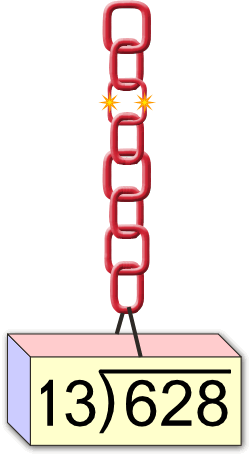
|
| A weak “addition link” in the math skills chain may be able to support a basic problem like “5 + 2,” but may fail when bearing the weight of a more advanced problem like “628 ÷ 13.” This is because addition must be used on the way to solving a long division problem. |
Take the long division problem, “628 ÷ 13,” for example. To solve this problem, one must: recognize the numerals and notational marks on the page and their mathematical significance, estimate the various digits of the quotient (a multiplication skill), place them over the correct digits in the dividend (a place-value skill), multiply by the divisor (this may include the “carrying” skills of addition), subtract to find remainders, and so on.
All of the skills used in the “5 + 2” problem are still very much needed in the “628 ÷ 13” problem! Now here’s the rub: a weak link in the skills chain, even a weak “addition” link, will adversely affect our student’s performance in long division.
The general principle is that the quality of our students’ performance in any given task is likely to be limited by the weakest link in the skills chain required for that task. A corollary principle is that a weak link in the skills chain at any given proficiency level will adversely affect performance at all higher proficiency levels.
What does all this have to do with the skills “humps” we were talking about earlier? Just this: a weak link in the skills chain is basically nothing other than a skill which has never gotten over the hump! What complicates matters is that we sometimes fail to detect a weak link in our students’ skills chains, or a hump in their road to proficiency, as soon as we should.
Part of the reason for this failure is that a weak link in the skills chain may not be apparent until we hang a heavy performance “weight” on the chain. Then, when the chain “snaps,” we realize that there’s a problem somewhere. For example, a student may habitually resort to mental “finger-counting” when solving simple addition problems like “5 + 2.” We may not notice this, and our student may not think it’s any big deal either. Later, though, when he encounters problems where he has to find “5 + 2 + 8 + 3 + 6” on his way to getting the answer, or when he’s doing a problem like “628 ÷ 13,” in which addition skills need to be “second nature,” the addition link that once seemed strong snaps, and our student bogs down and becomes discouraged.
Over the Hump!
So, suppose our student is having trouble in a particular academic area. How do we find the weak links in his or her skills chain? One good way is to back ’way up and try some activities which should be quite easy, which require only links which our student should have mastered long ago. Lo and behold, we may find that there are some unconquered humps even among those basic skills! If our student is okay at the very basic level, try activities which require successive links, until we notice that our student begins to have trouble.
A weak link in the skills chain
is simply a skill that has
never gotten over the hump!
At this point, we should back up a link or two and “drill” our student on the weak link, helping him to get over the hump and strengthen the weak links in his skills chain. By “drill,” I mean that we have the student do exercises which use the weak skill link without also using more advanced links. Then, gradually add more “weight” and use further links. (Well-designed drills need not be overly long or tedious.) While using this procedure, keep the following points in mind:
• Don’t presume that “knowing about” is the same as doing well. We don’t want mere armchair quarterbacks! In the midst of such questions as “Can my child describe it?”, “Can my child give an example of it?”, “Can my child classify it?”, and so on, don’t forget the importance of the question, “Can my child DO it?”
• Try to raise the proficiency level of each new skill a bit higher than it “needs” to be at that particular time. Why? Because as soon as the very next skill is introduced, the previously learned skill will need to function at this higher (i.e., confident, natural, over the hump) level, or a weak link is likely to develop in the skills chain.
• Remember three important phases of “hump hopping”: (1) get the facts down cold, (2) get the procedures down pat, and (3) practice makes permanent. These phases of acquiring a skill occur concurrently to an extent, but they must all occur.
• Try to cultivate a diagnostic frame of mind as you evaluate your children’s performance. When your kids are having difficulties, ask yourself, “What are the skill ‘links’ that are involved in doing this academic task?”, “Which one of these links seems to be weak?”, “Are the facts down cold?”, “Are the procedures down pat?”, and try to be as specific as you can with your answer.
• Give your kids a daily dose of “academic calisthenics.” These can take the form of brief, daily performance drills which focus on factual and procedural, nuts-and-bolts DOING. Drills with goals for both time and accuracy make weak areas stand out like sore thumbs, and provide a great way for student and teacher to measure and recognize skills improvement. One series of such drills is the School Made Simple’s Learning Vitamins® series, and there are others as well.
• Give your kids early opportunity to use their skill in the real world. Let them practice penmanship by addressing some envelopes for you. Let them practice reading by reading Bible verses or short news articles to the family. Let them practice math by adding up a grocery bill from the prices in a store flyer. Practice makes permanent.
• Finally, in connection with regular drills, give your kids the opportunity to meet a performance standard. By this I mean that advancement to higher-level drills is conditioned on successful mastery of earlier drills. In this way, we can help give our students the humility and honesty to acknowledge their limitations, and the pleasure and gratitude that comes from getting “over the humps” with God’s enablement and provision.
Self-Reinforcement is the Goal
Remember: When our students get over their learning humps, they forge strong skills chains, and begin to sense the opportunities for using their skills with an expectation of success. Our students begin to use their new skills on their own, gaining practice and polish as they blossom into fuller possession of the abilities that God has given them. That is certainly one of our goals as Christian homeschoolers. And as our students’ skills become self-reinforcing, our job as teacher gets easier, too!

Geting Over the Hump to Self-Reinforcing Skills!
A great outcome for both students and teachers!
© 2010 Edwin C. Myers
 ...Go to the previous page
...Go to the previous page 